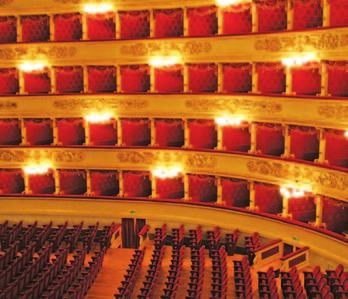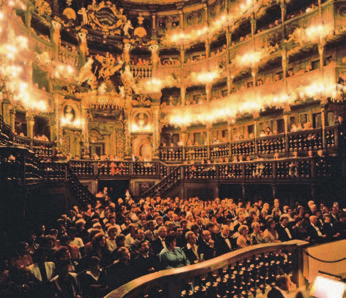How Music Works (2 page)
Authors: David Byrne
Tags: #Science, #History, #Non-Fiction, #Music, #Art

be heard—and given the size of the place, intimate gestures and expressions
would be seen and appreciated as well, at least from the waist up. What-
ever went on below the waist was generally invisible, obscured by the half-
standing, half-sitting audience. Most of the audience would have had no
idea that the guy in that photo was rolling around on the stage—he would
have simply disappeared from view.
This New York club was initially meant to be a bluegrass and country
venue—like Tootsie’s Orchid Lounge in Nashville. The singer George Jones
knew the number of steps from the stage door of the Grand Ole Opry to
the back door of Tootsie’s—thirty-seven. Charlie Pride gave Tootsie Bess a
hatpin to use on rowdy customers.
Below is a photo of some performers at Tootsie’s.C Physically, the two
clubs are almost identical. The audience behavior was pretty much the same
in both places, too.D
The musical differences between the two venues are less significant than
one might think—structurally, the music emanating from them was pretty
much identical, even though once upon a time a country music audience at
Tootsie’s would have hated punk rock, and vice versa. When Talking Heads
first played in Nashville, the announcer declaimed, “Punk rock comes to
Nashville! For the first, and probably the last time!”
Both of these places are bars. People drink, make new friends, shout, and
fall down, so the performers had to play loud enough to be heard above that—
and so it was, and is. (FYI: the volume in Tootsie’s is
much
louder than it usually was in CBGB.)
C
D
Looking at this scant evidence, I asked myself, to what extent was I writing music specifically, and maybe unconsciously, to fit these places? (I didn’t know about Tootsie’s when I began to write songs.) So I did a little digging to see if other types of music might have also been written to fit their acoustic contexts.
WE’RE ALL AFRICANS
Percussive music carries well outdoors, where people might be both dancing
and milling about. The extremely intricate and layered rhythms that are
typical of this music don’t get sonically mashed together as they would in, say, a school gymnasium. Who would invent, play, or persevere with such rhythms
if they sounded terrible? No one. Not for a minute. This music doesn’t need
amplification, either—though that did come along later.
The North American musicologist Alan Lomax argued in his book
Folk Song
Style and Culture
that the structure of this music and others of its type—essentially leaderless ensembles—emanates from and mirrors egalitarian societies, but suffice it to say that’s a whole other level of context.1 I love his theory that music and dance styles are metaphors for the social and sexual mores of the societies they emerge from, but that’s not the story I aim to focus on in this book.
Some say that the instruments being played in the photoE at the top of the
next page were all derived from easily available local materials, and therefore it was convenience (with a sly implication of unsophistication) that determined the nature of the music. This assessment implies that these instruments and
this music were the best this culture could do given the circumstances. But I would argue that the instruments were carefully fashioned, selected, tailored, and played to best suit the physical, acoustic, and social situation. The music perfectly fits the place where it is heard, sonically and structurally. It is absolutely ideally suited for this situation—the music, a living thing, evolved to fit the available niche.
That same music would turn into sonic mush in a cathedral.F Western music
in the Middle Ages was performed in these stone-walled gothic cathedrals, and in architecturally similar monasteries and cloisters. The reverberation time in those spaces is very long—more than four seconds in most cases—so a note
sung a few seconds ago hangs in the air and becomes part of the present sonic landscape. A composition with shifting musical keys would inevitably invite
16 | HOW MUSIC WORKS

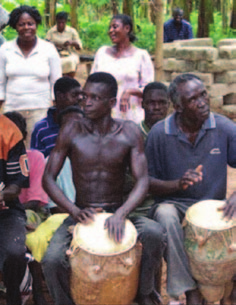
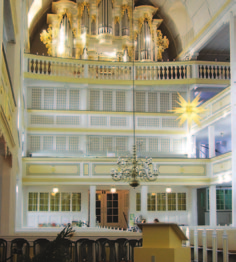
dissonance as notes overlapped and clashed—a
real sonic pileup. So what evolved, what sounds
best in this kind of space, is modal in structure—
often using very long notes. Slowly evolving mel-
odies that eschew key changes work beautifully
and reinforce the otherworldly ambience. Not
only does this kind of music work well acous-
tically, it helps establish what we have come
to think of as a spiritual aura. Africans, whose
spiritual music is often rhythmically complex,
may not associate the music that originates in
E
these spaces with spirituality; they may simply
hear it as being blurry and indistinct. Mytholo-
gist Joseph Campbell, however, thought that
the temple and cathedral are attractive because
they spatially and acoustically recreate the cave,
where early humans first expressed their spiritual
yearnings. Or at least that’s where we
think
they
primarily expressed these feelings, as almost all
traces of such activities have disappeared.
It’s usually assumed that much Western
medieval music was harmonically “simple” (hav-
ing few key changes) because composers hadn’t
yet evolved the use of complex harmonies. In
this context there would be no need or desire to
include complex harmonies, as they would have
sounded horrible in such spaces. Creatively they
did exactly the right thing. Presuming that there
F
is such a thing as “progress” when it comes to
G
music, and that music is “better” now than it
used to be, is typical of the high self-regard of
those who live in the present. It is a myth. Crea-
tivity doesn’t “improve.”
Bach did a lot of his playing and writing in
the early 1700’s in a church that was smaller
than a gothic cathedral.G As you can imagine,
DAV I D BY R N E | 17
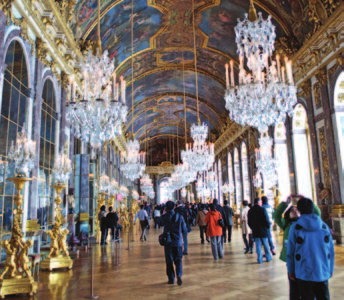
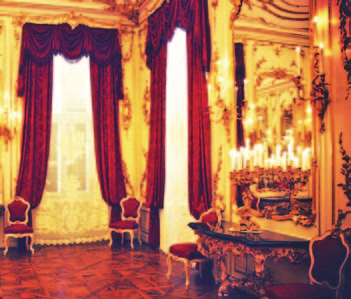
there was already an organ there, and the sound was reverberant, though not
as much as in the giant gothic cathedrals.
The music Bach wrote for such spaces sounded good in there; the space
made the single instrument, the pipe organ, sound larger, and it also had the nice effect of softening any mistakes as he doodled up and down the scales,
as was his wont. Modulating into different keys in the innovative way he did was risky business in these venues. Previously, composers for these rooms
stayed in the same key, so they could be all washy and droney, and if the room sounded like an empty swimming pool, then it posed no problem.
I recently went to a Balkan music festival in Brooklyn in a hall that was
almost identical to the church pictured on the previous page. The brass bands were playing in the middle of the floor, and folks were dancing in circles
around them. The sound was pretty reverberant—not ideal for the compli-
cated rhythms of Balkan music, but then again, that music didn’t develop in
rooms like the one I was in.
In the late 1700s, Mozart would perform his compositions at events in his
patrons’ palaces in grand, but not gigantic rooms.H, I At least initially, he didn’t write expecting his music to be heard in symphony halls, which is where they’re often performed today, but rather in these smaller, more intimate venues. Rooms like these would be filled with people whose bodies and elaborate dress would deaden the sound, and that, combined with the frilly décor and their modest
size (when compared to cathedrals and even ordinary churches) meant that his similarly frilly music could be heard clearly in all its intricate detail.
People could dance to it too. My guess is that in order to be heard above
H
I
